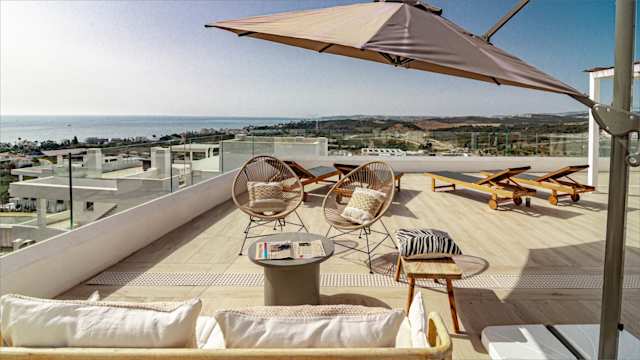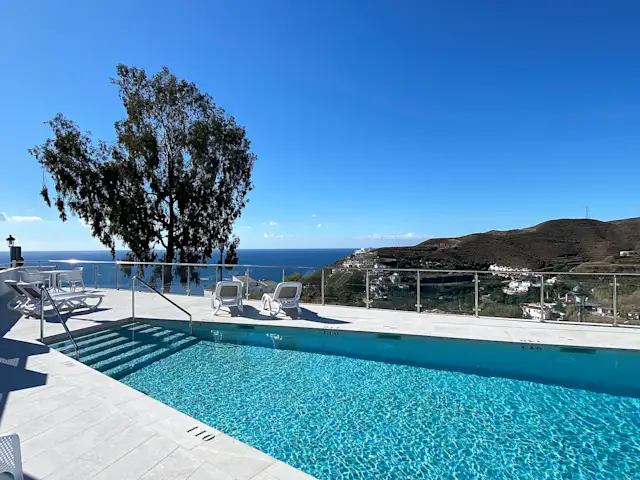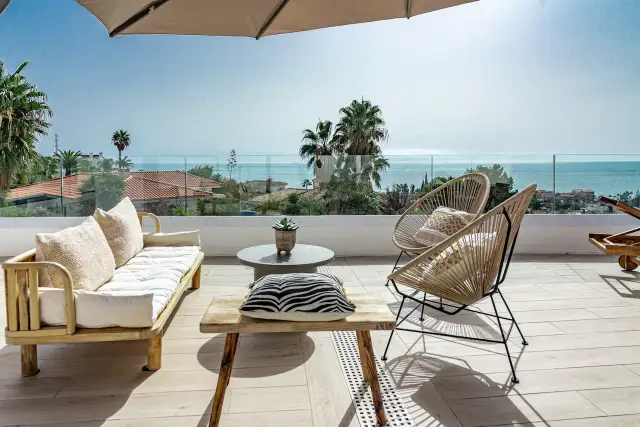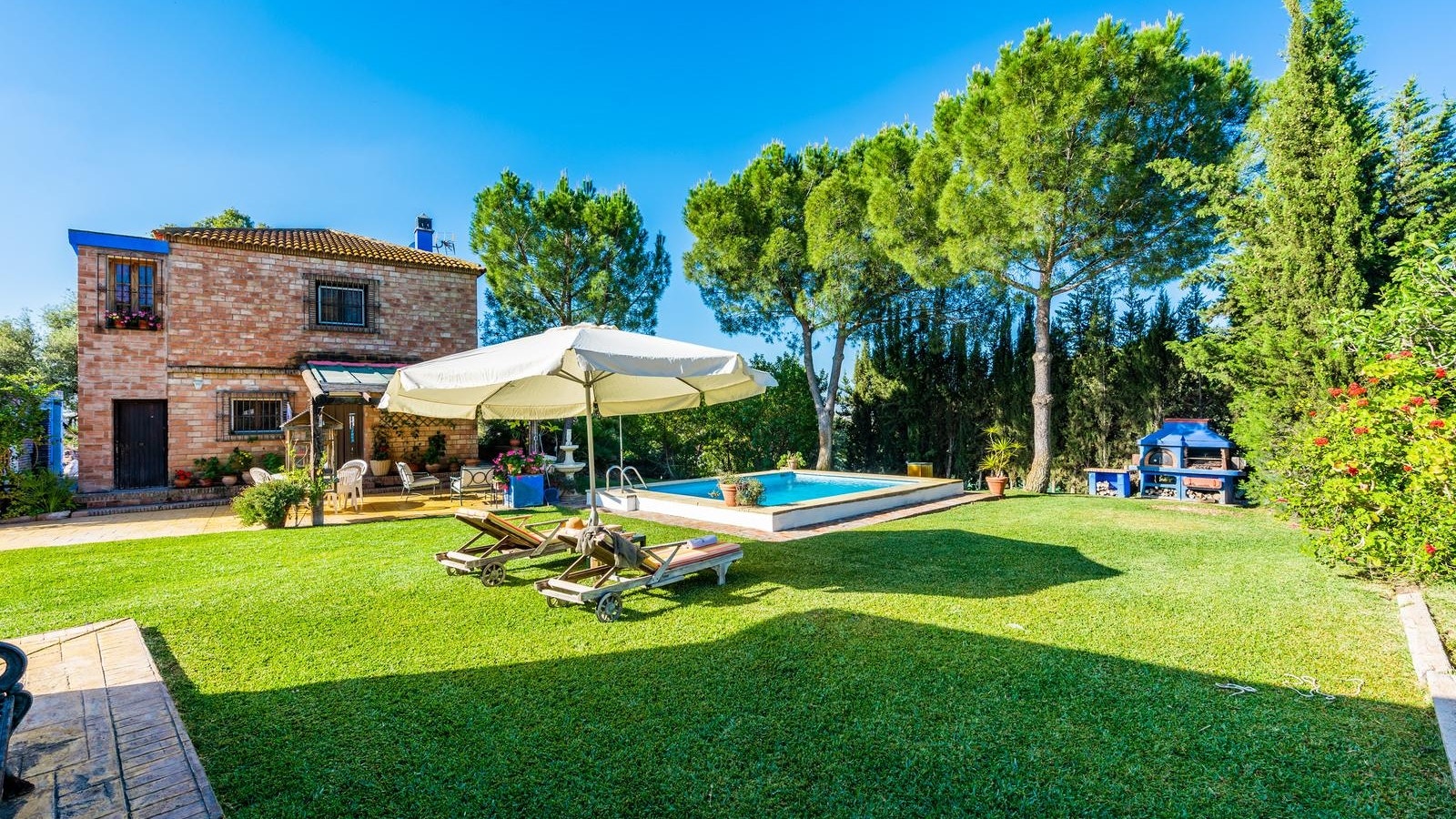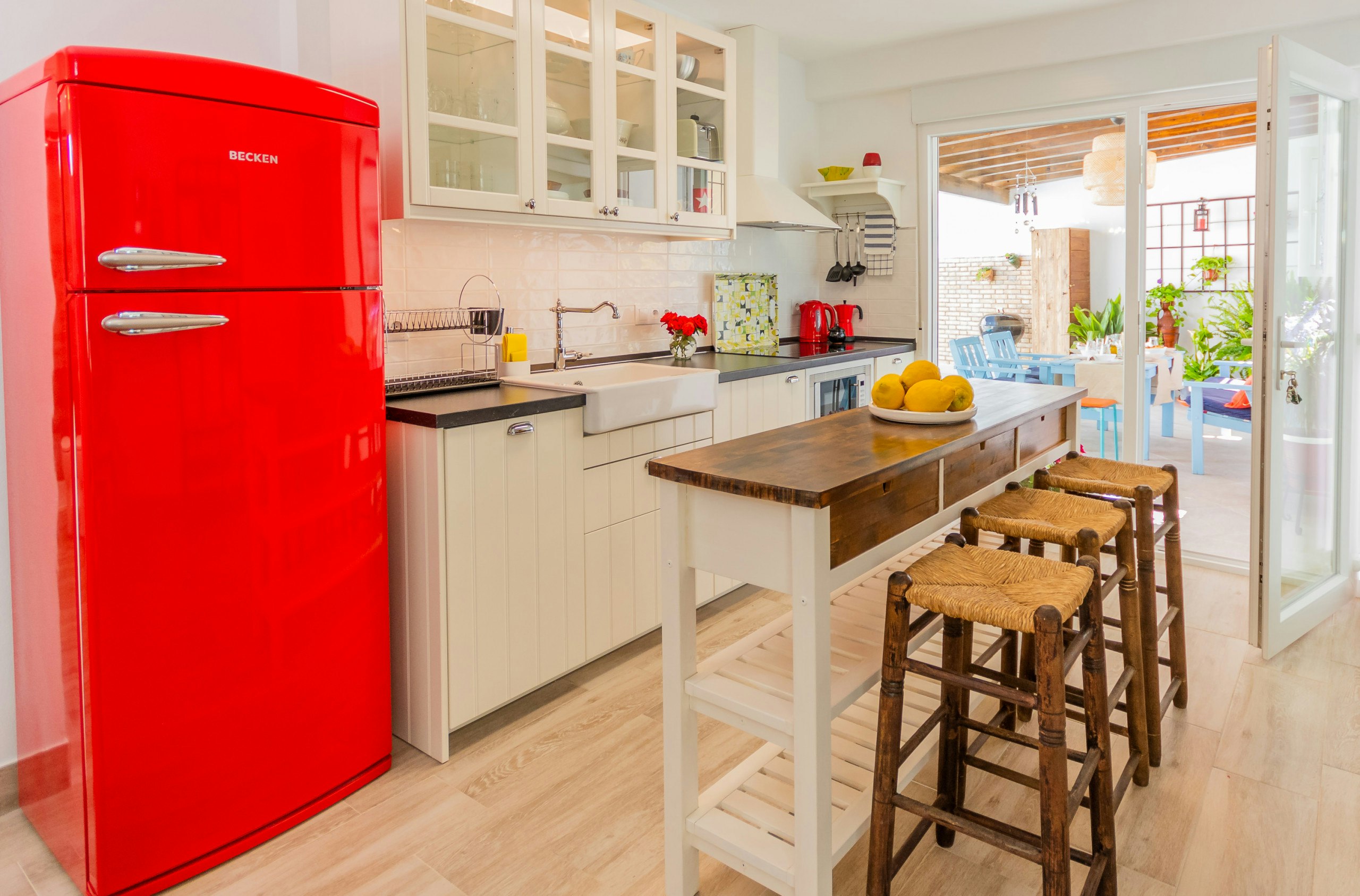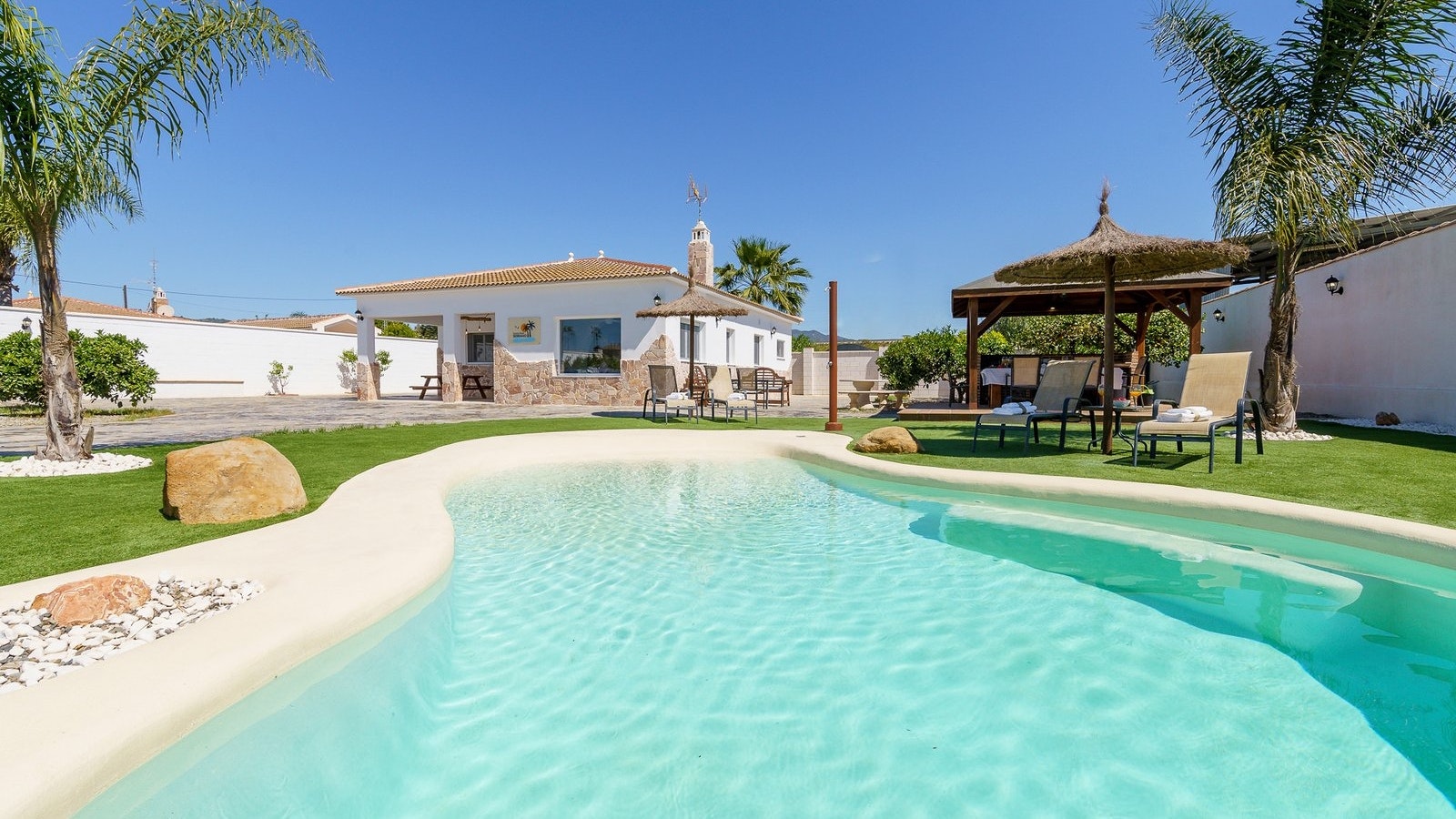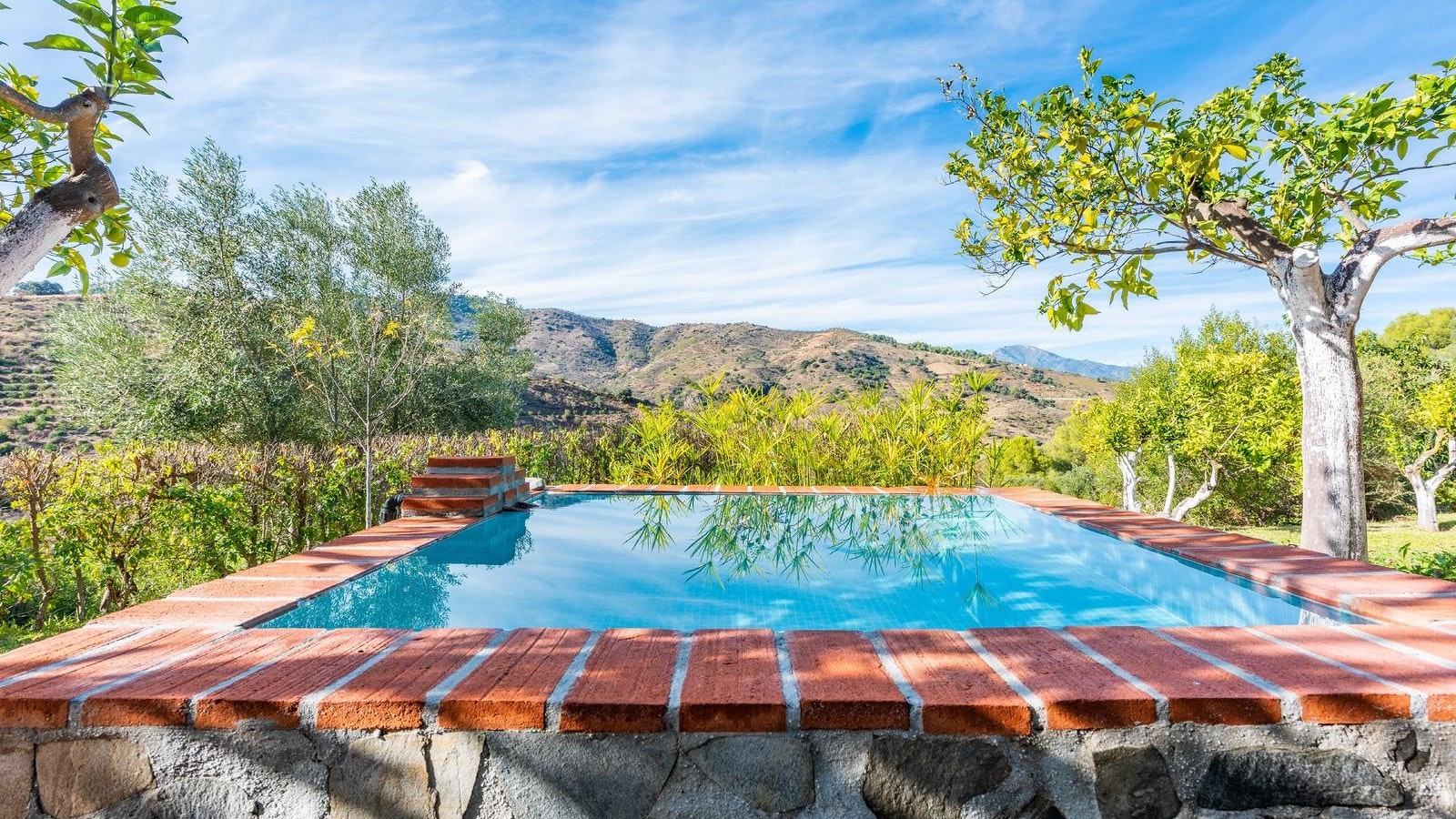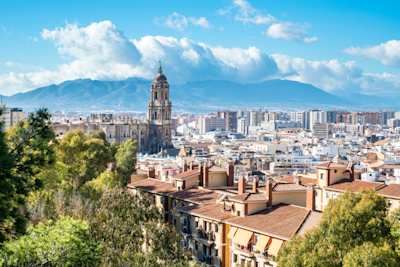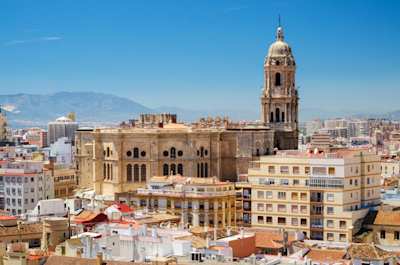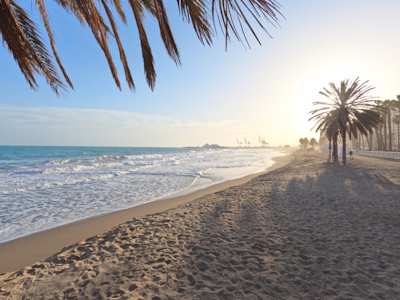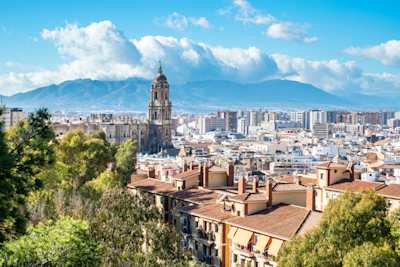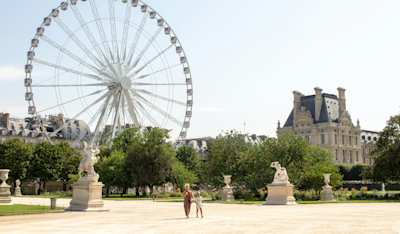Malaga Villas
Here’s all you need to know about staying in Malaga
~
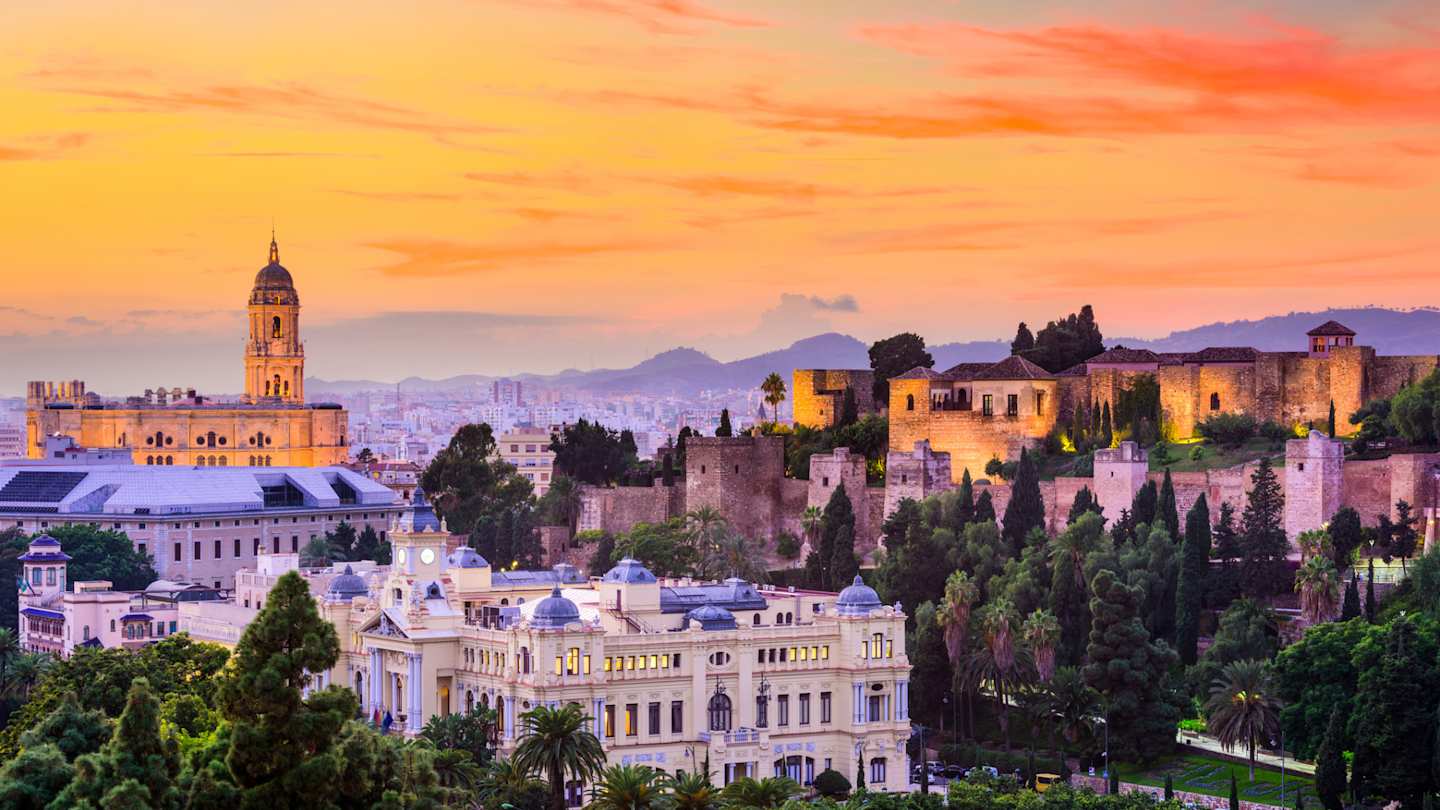
Andalusia is one of Spain’s most interesting regions, filled with vibrant cities and incredible landscapes. Down on the coast, you’ll find the sun-soaked province of Málaga. Its pride and glory is the wonderful Costa del Sol, a long stretch (over 150 kilometres, in fact) of golden beaches and bright blue waters. The travel experts at Plum Guide have all there is to know about travelling in the area and have put together this comprehensive travel guide to Málaga. Say hola to your new favourite holiday destination.
General info about Málaga
It may seem like a modern tourist resort, but Málaga is one of the oldest cities in the world. The Phoenicians founded a commercial centre here over 3,000 years ago and named it ‘Malaka’. The Phoenicians didn’t stay for long, though, as the area soon saw the Greeks, the Carthaginians, the Romans, the Visigoth tribes, the Moors, and the Christians take over. With such a rich history, exploring these glimpses of the past in Málaga’s buildings, cuisine, and local culture can be fascinating.
Best time to visit Málaga
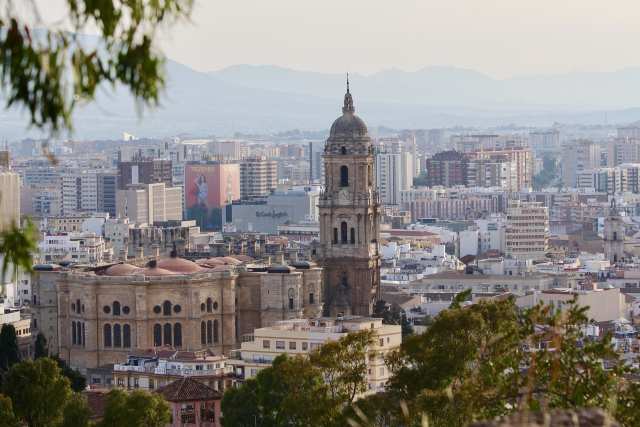
View over Malaga, Spain
With 300 days of sunshine each year, there’s no wrong time to visit Málaga. However, the peak summer months can get very hot and busy, so if you’re looking to avoid the crowds but still get some warm weather, May to June is your best bet. Autumn is also a good option, especially for gourmands, as this is when the food festivals happen. Celebrate raisins at the Day of the Raisin in September, gorge on cheeses in October at the Artisanal Cheese Festival, or enjoy chestnuts at the Chestnut Festival in November.
How to get to Málaga
Málaga city is well connected by plane, train, car and bus with other major cities in Spain and Europe. Málaga Airport serves Málaga province and has many flights from different Spanish and European cities. If travelling by train, the Malaga María Zambrano Train Station has connections with other major cities in Spain.
Top activities and attractions
Beaches
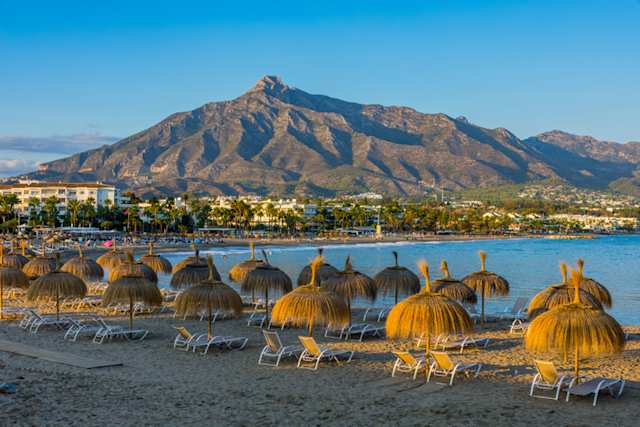
Puerto Banus beach at sunrise overlooking the mountains, Malaga
Málaga is the ultimate seaside holiday, and you’re spoilt for choice when it comes to beaches. Playa Burriana near Nerja is a wide expanse of sand with everything you need, including water sports rentals, sunbeds, volleyball courts and chiringuitos, which serve some of the freshest seafood around. For a more relaxed vibe, Playa Peñón del Cuervo is peppered with shaded palms and sees mostly local families who come for barbecues on the beach. Tucked away in a cove, Playa el Cristo has warm, shallow waters perfect for swimming.
Water sports
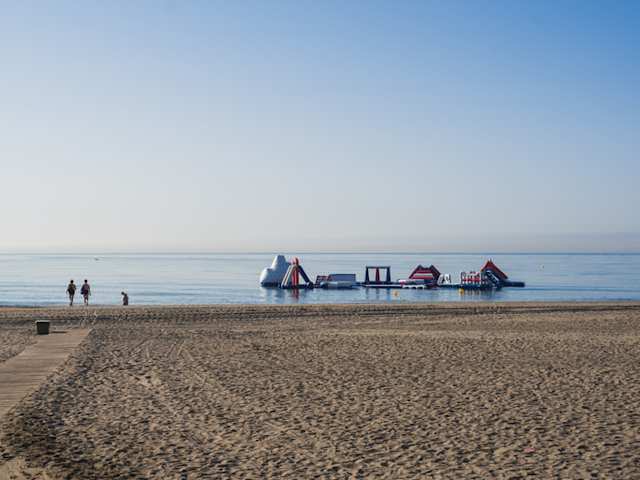
Inflatable water park in La Rada beach in Estepona, Costa del Sol
It is no surprise that the Costa del Sol is a magnet for adrenaline junkies. Up and down the coast, you’ll find water sports like kitesurfing, windsurfing, jet-skiing, parasailing, flyboarding and wakeboarding. However, those looking for something a little less fast-paced don’t have to miss out, as there are plenty of opportunities for kayaking, stand-up paddleboarding, snorkelling and sailing. You can even hop aboard a catamaran and sail around the coast, stopping to swim and sunbathe as you go along.
Hiking
As well as its seaside attractions, Málaga's hinterland is worth exploring. Hiking is popular in the region, with various trails taking you along rugged mountains and through lush river valleys. One of the most famous trails is the eight-kilometre Caminito del Rey, once considered one of the most dangerous in the world. This hike offers extraordinary views of the El Chorro lakes, and although it's much safer today, the experience of stepping across a walkway hanging 100 metres up on a sheer cliff face remains unforgettable.
Vineyards & wineries
Although wine has been produced in Málaga since Phoenician times, it’s only recently that wine tourism has flourished here. The Axarquía, the Montes de Málaga, Norte, the Serranía de Ronda and Manilva are the main wine-producing areas. Start your wine journey at the Málaga Wine Museum before heading off for a tasting at the various wineries in the region. We highly recommend Bodega Bentomiz, Bodega Descalzos Viejos and Bodega Cortijo Los Aguilares.
Natural wonders
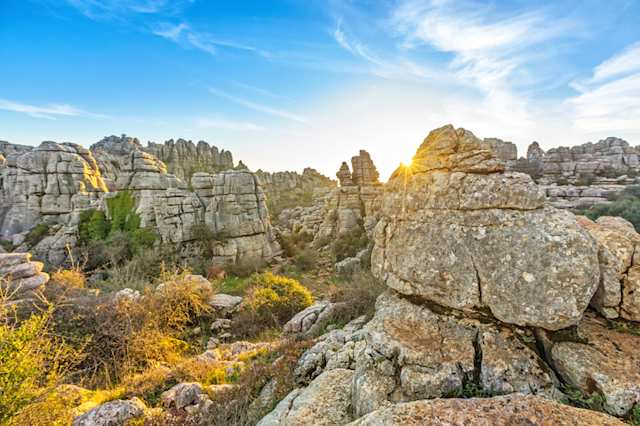
Sunset in El Torcal de Antequera natural park, Spain
Understandably, Málaga is mainly known for its coastline. But this region is also home to many natural treasures which are much less visited than they deserve. The Nerja Caves are one of Málaga'sit's highlights, a labyrinth of underground tunnels and jaw-dropping rock formations. Another must-visit is the Torcal of Antequera, one of Europe's most important karst landscapes. This otherworldly landscape is an incredible place for a hike—don't forget your camera.
Hidden gems
What would a travel guide to Málaga be without some hidden gems? Take yourself out of the main tourist area and head to Lobo Park, one of the region's least-touristy attractions. This nature reserve is dedicated to studying and preserving wolves and offers tours to see the Alaskan, European and Iberian wolves. Nearby is the town of Antequera, which (despite its proximity to major cities like Málaga and Granada) remains unaffected by mass tourism. This is a lovely place to wander around, admire the ornate churches, and try traditional Spanish cuisine. Another hidden gem is Fuente de Piedra, the largest lagoon in Andalusia—take a guided tour to see large flamingo colonies.
Best areas to visit and stay in
Málaga city
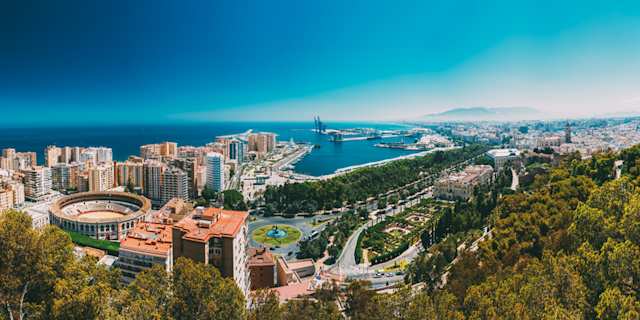
Panorama cityscape aerial view of Malaga, Spain
The city of Málaga is the best place to stay if you want to be at the heart of the action. The centre is the neighbourhood of El Centro, also known as downtown or the Old Town. This is the perfect spot for first-timers as all the main attractions are within easy walking distance, like the Picasso museum and the 16th century Catedral de la Encarnación de Málaga. In the Plaza de la Merced, you'll find the birthplace of Picasso, while in Plaza de la Constitución, you can take your pick from the many bars, cafes and restaurants.
Marbella

Aerial top view of luxury yachts in Puerto Banus marina, Marbella
Another city on the Costa del Sol is Marbella. This fashionable destination attracts chic crowds for exclusive golf courses and fancy beach clubs. But look to the Old Town, and you'll find a whole other world, with charming whitewashed houses and cobbled streets dotted around the Moorish centre. Enjoy an al fresco lunch in Plaza de los Naranjos amongst blossoming orange trees, and come sundown, enjoy a stroll along Marbella's scenic palm-lined promenades.
Axarquia
Often thought of as the 'real' Andalusia, this region boasts towering mountains, lush valleys, coastal towns and remote villages. This is a great place to visit if you want to escape the pumping beach clubs of Málaga and Marbella. Get into nature, hike or cycle the surrounding mountains, explore the whitewashed hilltop village of Comares, and swim in the azure La Viñuela reservoir. Even if you're more inclined to stay horizontal (preferably with a chilled glass of wine in hand), there's plenty of opportunity for that.
Nerja
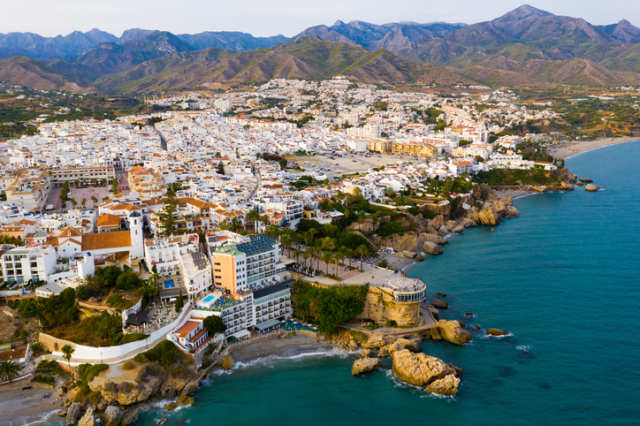
Aerial view of the Spanish city of Nerja, Málaga
Part of Axarquia, the seaside town of Nerja, is one of our favourite places in Málaga. Despite being a popular beach destination, it maintains a small, village-like feel and is perfect for families and couples. Spend lazy days on Playa Burriana, getting up only to eat delicious, smoky paella from Ayos, a beachside eatery which has been around since 1969. For a day out, take a walk to Rio Chillar, which takes you along a river into the hills, where you'll find hidden waterfalls and rock pools. Back in town, pop by Balcon de Europa for sunset views over the coast.
Guadalhorce
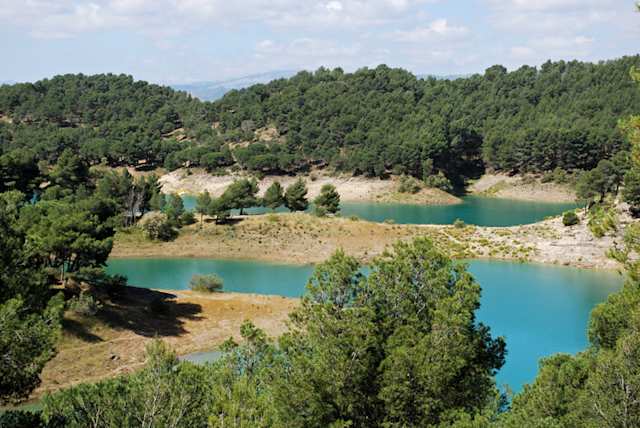
Elevated view across the treetops towards Guadalhorce lake and mountains, Malaga
Nicknamed 'the garden of Málaga', the Guadalhorce river valley is dotted with peaceful little towns like Alhaurin el Grande, Cartama and Coín, nestled amongst the olive groves and orange orchards. This region is an excellent destination for those who want to get active, with plenty of opportunities for hiking and cycling. There's also the option to relax at the El Chorro lakes, three turquoise-coloured lakes bordered by pine and oak forests—the perfect place to swim, kayak, fish and enjoy a picnic on the shores.
Eating out in Malaga
Any good travel guide to Málaga should include a section on what to eat. Málaga province is home to a unique gastronomy which makes the most of local produce like olives, almonds, grapes, raisins, seafood and baked goods. Its cuisine (as well as Andalusian cuisine) is heavily influenced by the Moors, featuring ingredients like cinnamon, saffron, cumin and dried fruits.
Local delicacies
It's not just about the paella here, although Málaga does this dish well. There are too many local delicacies to mention. Still, some of the must-try dishes include espetos (grilled sardine skewers), gazpachuelo (soup with mayonnaise, egg yolk, hake, prawns, potatoes and garlic) and gambas al pil pil (prawns flash-fried with garlic, paprika, chillies and white wine). Don't worry; we've not forgotten the desserts—finish strong with borrachuelo (fried dough that has been soaked in wine and anisette and filled with pumpkin or sweet potato mixture) and melocotón en almíbar (peaches poached in sugar and vanilla, served with ice cream or borrachuelos).
Where to find food
The best place to get a feel for a region's food is to visit the local markets. Málaga city's two best-known markets, Atarazanas and La Merced are fantastic places to visit. However, they don't have the authentic local atmosphere of Mercado Salamanca, which can be found outside the city centre. Arrive early to watch locals snap up the freshest produce, picking up a few products yourself.
As well as plenty of cafes and restaurants in most major towns and cities, you'll also come across a typical Spanish chiringuito. These are simple snack bars on the beach, typically serving light meals and refreshments. Chiringuitos are your best friend on a beach day and are perfect for when you don't want to leave your coveted sunbathing spot.
